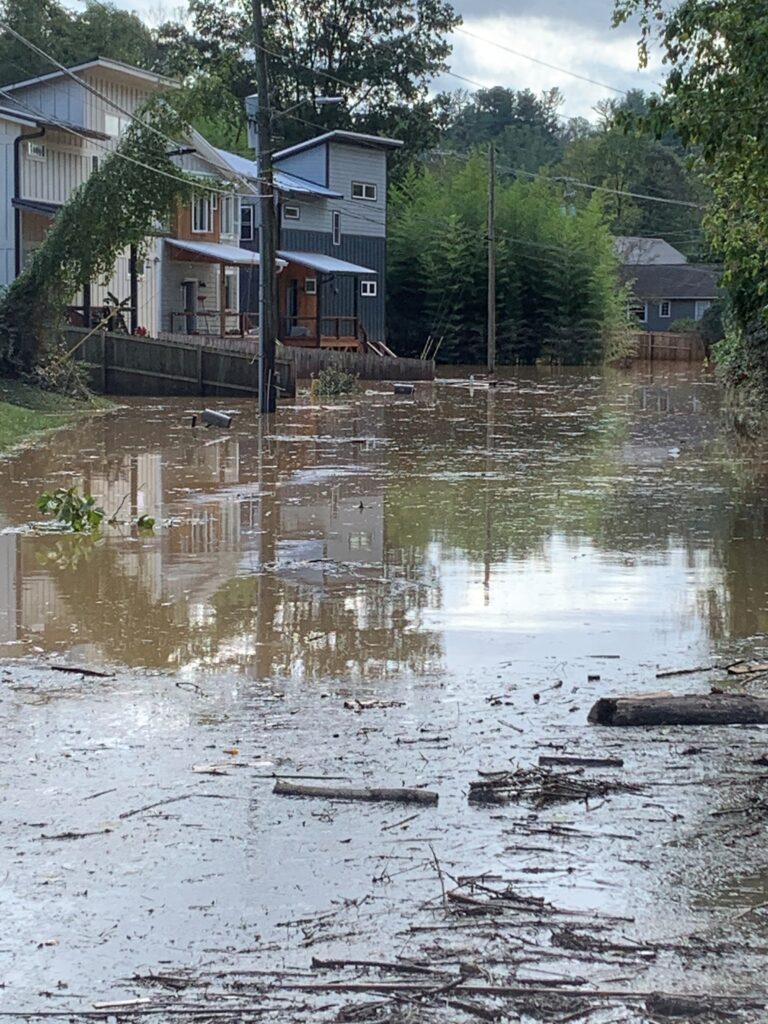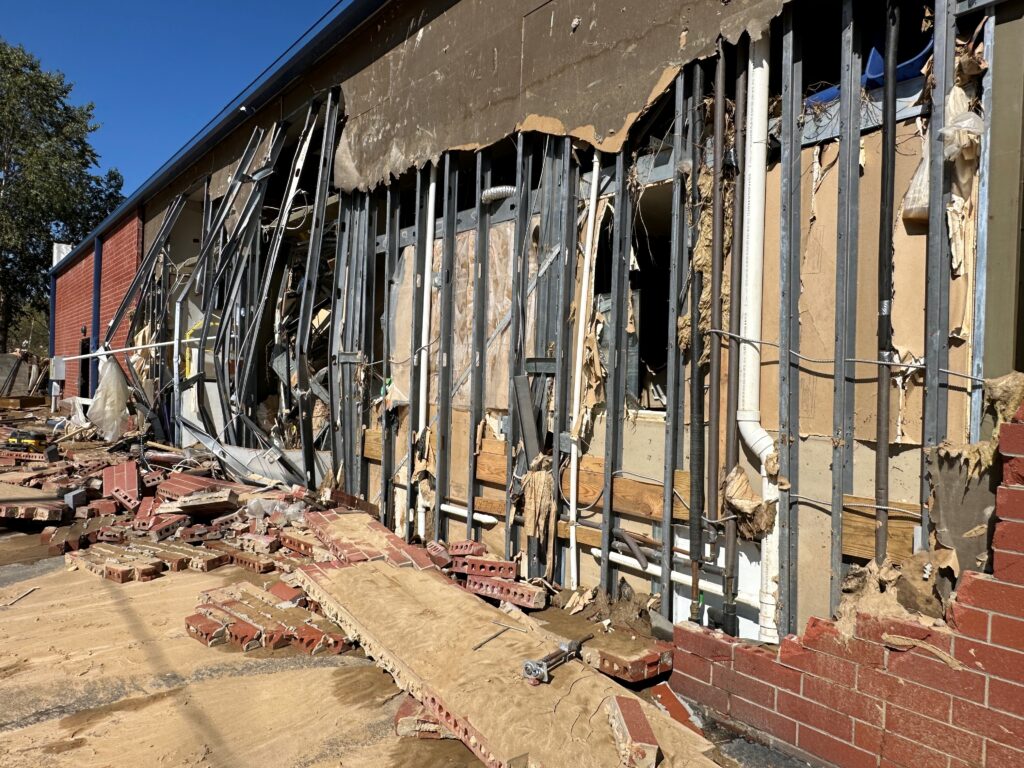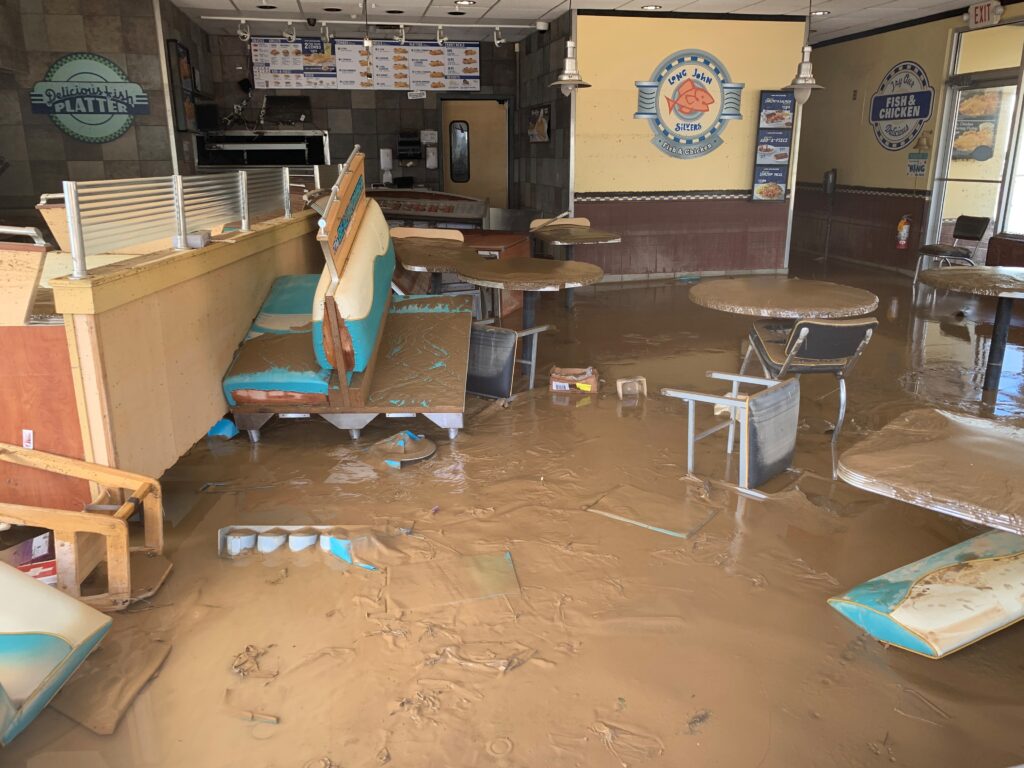
How Disaster Planning Helped the City of Asheville in the Aftermath of Tropical Storm Helene
While there’s no possible way to prepare for a storm of this intensity that created damage of this magnitude, there are best practices that can be implemented through the Incident Command System
In August 2024, Asheville, North Carolina, was significantly impacted by tropical storm Helene, a powerful storm that brought heavy rains, strong winds and widespread flooding throughout the region. Though the storm didn’t make direct landfall in the city, Asheville faced challenging conditions that caused immense devastation including deaths, damage to infrastructure, power outages and road closures.

In anticipation of such events, the City of Asheville had already laid the groundwork for emergency preparedness, enabling a more effective response in the storm’s aftermath.
A Coordinated Disaster Plan for Asheville
Starting in January 2023, Asheville committed to developing a city-wide, department-by-department Emergency Operations Plan (EOP) that included a Continuity of Operations Plan (COOP). This effort included multiple in-person meetings, led by the City’s Emergency Manager, with strong support from the City Manager’s office.
The goal was to ensure that all departments had a clear, coordinated plan to respond to various disaster scenarios.
“While there’s no possible way to prepare for a storm of this intensity that created damage of this magnitude, there are best practices that can be implemented through the Incident Command System,” said Mark Matheny, Director, Development Services Department, City of Asheville, who has over three decades of experience in construction and municipal governance.

Matheny emphasized that one effective approach is tabletop exercises in which the organization practices responding to a fictitious disaster scenario.
“As an organization, we periodically participate in tabletop exercises under the oversight of our Emergency Management team,” explained Matheny. “While we weren’t able to fully prepare for this specific event, everyone knew to refer to the operational documents we’d worked on over the past couple years. They knew an Emergency Operations Center (EOC) would exist, they knew they may be called into the EOC or operate outside the EOC.
He also noted, “The department’s EOP guided them on how to manage major emergencies including preparedness, response and recovery activities. Their COOP ensures they can continue to perform essential functions, provide essential services and deliver core capabilities during a disruption to routine operations.”
A Recovery Dashboard: More than 1,600 Assessments
To date, the City of Asheville has completed an unprecedented number of building safety assessments — more than 1,600 assessments of all residential and commercial structures.
“For our community and region, this is an unheard-of number of damaged buildings for a single event,” said Matheny. “With such a large number of assessments it requires 100 percent of our inspection team, additional assistance from our Plan Review and Compliance divisions and help from other North Carolina jurisdictions.”
“The assessment process was new or unfamiliar to many of our staff, so it became an immediate learning curve with ATC-45 training provided by the North Carolina Office of State Fire Marshal and general human relations with storm affected members throughout our community,” he said.

Before and After: Top Five Differences
Matheny highlighted the city’s top five operational and information management differences before and after the storm:
- Separate Permit Departments: The city assigned specific staff to handle permits related to tropical storm Helene, including plan review and inspections. This allowed staff not working on storm-related permits to focus on ongoing development and construction projects unrelated to the storm.
- Two Types of Permits: A dedicated permit system was created for tropical storm Helene to track storm-specific permits while maintaining the regular permitting process for other projects.
- Inspector Knowledge of Flood and FEMA Requirements: While Certified Floodplain Managers in the Public Works/Engineering/Stormwater Division are experts in flood recovery and National Flood Insurance Program rules, Building Department staff may not be as familiar with these areas. Since Building Department staff will interact with the public, it’s essential to train them in flood-related criteria and regulations and provide useful resources for the community.
- Ongoing Information: The city continuously receives new information from federal, state and local sources, requiring staff to stay up to date with evolving rules and guidelines.
- Increased Need for Empathy: There is a growing need for staff to understand and address the community’s emotional and practical needs during the recovery process.
Navigating Helene: Matheny’s Changing Role
Matheny’s extensive expertise and industry leadership encompasses strategic planning, budget management and personnel leadership within the Development Services Department.
Prior to his current position, he served as Asheville’s Chief Code Official in which he was responsible for the administration and enforcement of state building codes. His influence extends beyond Asheville as evidenced by his service as Vice Chair of the North Carolina Building Code Council and Vice Chair of the Governing Committee of the International Code Council’s Building Membership Council since October 2018.
A respected educator, Matheny regularly provides training on building codes and professional development. His dedication to veterans is evident in his involvement with the Three Rangers Foundation and GallantFew.
His diverse background also includes military service as a U.S. Army Ranger and a foundation in construction technologies from St. Petersburg College.
In the post-storm reality, Matheny’s activities, new practices and recovery efforts after Helene include participating in EOC activities and assisting with departmental needs in real time, developing and coordinating action plans for building safety assessments and working with the public to provide support, information, etc. He also coordinates with the fire department, public works and others to provide the most efficient and safe building assessments.
Data, communication and permitting tools have also been a priority for Matheny, creating.
- An action team to create commercial and residential storm/disaster permits and coordinates with Geographic Information Systems (GIS) to map data provided from building safety assessments,
- How-To and FAQ documents on permitting for storm permits, what to do if your building is damaged, the next steps and how to reoccupy your building, etc.
- Storm-specific permits communication tools.
- Visual data experience through the Asheville Recovery Dashboard including color-coded map links to building safety assessments.

Radio-Active: Lessons Learned and Top Tips for Storm-Ravaged Cities
Matheny’s top recommendations for others facing similar challenges include communicating with the public immediately and updating and sharing new information as quickly as possible. His team developed a “One Pager” that was updated daily and carried by all field personnel.
For days and weeks, Matheny said there was no cell service, power or water. Downed trees blocked access and created a great deal of damage that had to be managed.
“Radio communication was a very important part of being able to communicate both internally and externally,” said Matheny.
His tips also include developing protocols for staff as quickly as possible, preferably pre-storm.
“This allows for a staff understanding of what to do but also assists in creating a single voice for community questions,” he said.
Additional tips include developing a reaction team dedicated to assisting property and building owners. The City of Asheville created a Flood Assistance Support Team (FAST) comprised of inspectors, plan reviewers, floodplain managers and zoning personnel. The city blocked out standard hours throughout the day in which the community can sign up for one-hour meeting sessions.
The City also developed a process with “Open for Business” guidelines that allows for a temporary and expedient methods to get buildings, homes and businesses occupied and functional in a short period of time.
“[These guidelines] won’t be 100 percent compliant of codes and ordinances but provide an acceptable level of safety for the occupants,” said Matheny. “This proved to be a great help in getting businesses back up and running while still working through other storm related issues.”
An Improved Way to Share Information
Designed with the community in mind, the new AshevilleRecovers.org website that launched in February is a central resource created to ease navigation through the many channels feeding into the city’s ongoing recovery efforts. It was built to evolve and adapt.
“We learned from resident feedback that it was often difficult to find or track needed information while sifting through the wealth of data available from several different sources,” said Matheny.
He emphasized that creating a platform featuring a “one-stop shop” approach allows community members to stay on top of important deadlines, find community events, ask questions and find the most recent data they need in their personal recovery efforts.
“It’s iterative because as our recovery evolves, so do resident needs,” said Matheny. “This site is designed to be responsive to those expressed needs.”







